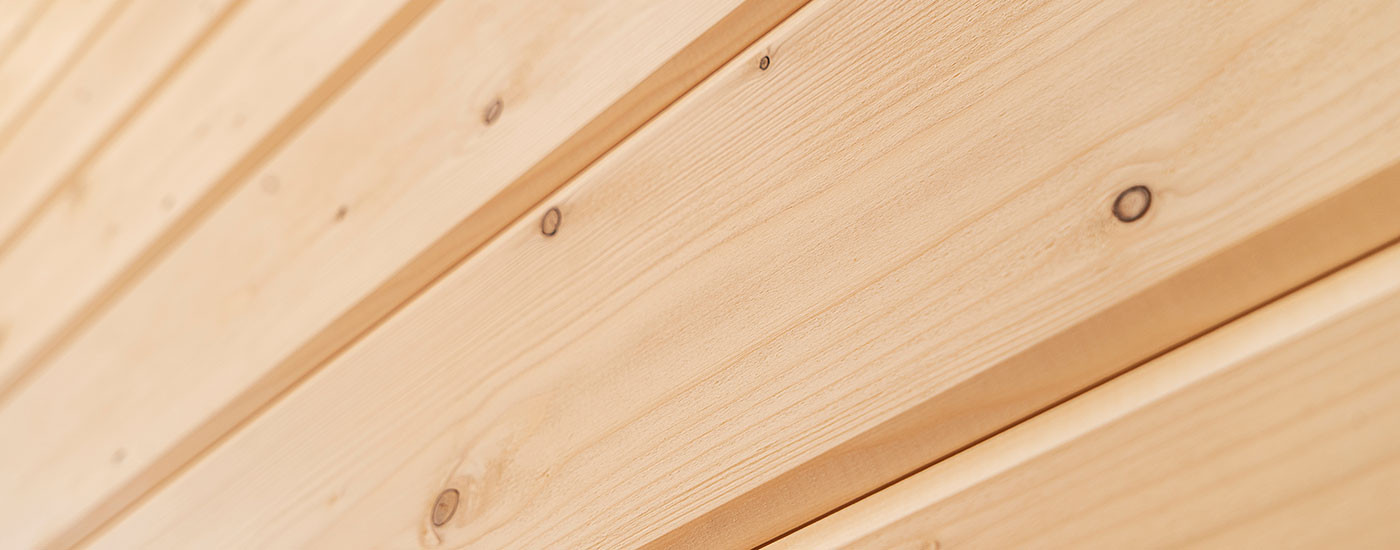Timber cladding has always been used in the production of garden sheds but has become much more on-trend for decorative purposes and as a means to improve the exterior of a property aesthetically. Timber cladding boards are available in an assortment of lengths and in different profiles, the most popular of which are shiplap and tongue and groove.
The difference between shiplap cladding and tongue and groove cladding
Which profile of cladding boards you choose will be determined by the characteristics you require from the cladding for your particular project. The differences between the two can be seen in the following areas.
The manufacture of shiplap cladding and tongue and groove cladding
The main difference between the two profiles lies in the way they are machined and how the boards fit together. Tongue and groove boards have a channel or ‘groove’ along one edge with a ridge or ‘tongue’ along the opposite edge. The tongue fits into the groove when the boards are pushed together, forming a strong join, with a tight appearance. Shiplap cladding boards connect together in the same way but feature an overlap that sits over a curved edge. The result gives a step and curve design down the surface, referred to as a rabbet join.
The aesthetics of shiplap cladding and tongue and groove cladding
Tongue and groove is a popular choice for the exteriors of buildings and sheds. The seamless way the boards fit together give them a contemporary appeal and as dust and dirt have no recesses in which to gather, they are easy to clean and maintain. Shiplap has a more nautical aesthetic and is often chosen for coastal style properties.
How strong is shiplap cladding and tongue and groove cladding?
The flush, interlocking design of tongue and groove cladding makes this an extremely strong and durable option – natural friction between boards reduces movement, adding to the strength and, when used in conjunction with a timber framework will create an extremely sturdy structure. When used for an outdoor building or structure, tongue and groove cladding is secure and difficult to break in to. Water cannot seep through the joints, making the cladding waterproof.
Shiplap cladding gets its name from the shipbuilding methods of days gone by, and is even more waterproof; the design of the boards prevents water backflow through the boards and the curved edge encourages water runoff, allowing the surface of the cladding to dry quickly. Slightly less robust than tongue and groove, shiplap cladding is perfect for areas of high rainfall or in interior areas that have potentially high condensation levels, such as bathrooms and kitchens.
At Witham Timber, all our cladding boards are manufactured from pressure-treated timber that we source from sustainable and certified forests, and are therefore recommended for exterior applications. Our range includes timber framing, cladding boards and a selection of timber fixings. Our experienced staff will be happy to answer any queries you have via phone on 01205 359188 or by email at sales@withamtimber.co.uk, while our article Nails or screws when installing shiplap cladding has lots of helpful tips too.

